More results...
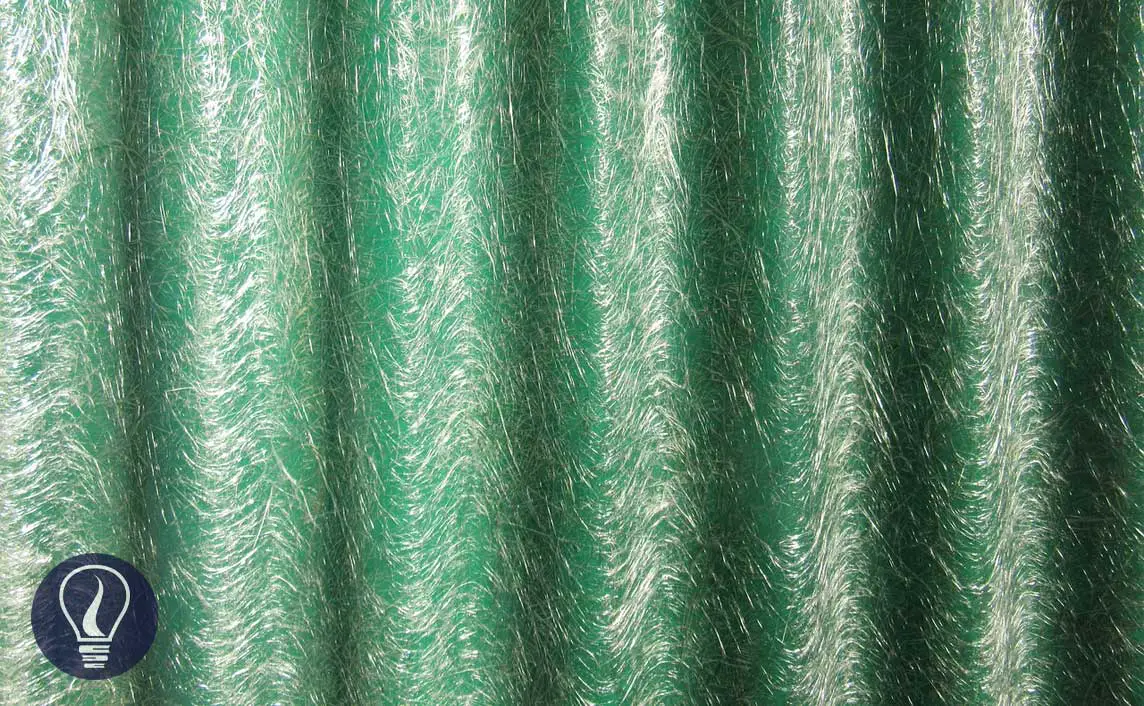

For specific applications such as aerospace, automobile, marine, and sporting polymers with high strength are used. The strength of the polymers can be increased by adding reinforcing additives. Some fillers such as Carbon black act as reinforcing agents in the natural rubber industry. Glass fibers are mainly used in the plastic industry and dramatically increase the strength of the polymer.
The reaction between a difunctional acid (or anhydride) and difunctional alcohol (glycol) results in a polyester. Here, characteristic ester linkages are formed, and an H2O molecule is released for each ester link. Some of the acids such as Maleic-acid, and Fumaric acid have double bonds with adjacent carbon atoms. This type of acid results in unsaturated polyesters when reacting with difunctional alcohols.
In the plastic industry, Glass filaments, Glass strands, Glass roving, Glass fabrics, and Chopped glass fibers are used as reinforcing fibers. The glass marbles are melted and processed to prepare glass fibers for desired applications.
To manufacture a continuous filament the grass marbles are re-melted in small furnaces at a temperature of 1400℃. The molten glass is attenuated into filaments through the orifices and wound onto a package by a high-speed winder. Continuous glass filaments are cooled to room temperature by spraying water.
As the glass is attenuated and wound, a binder containing film formers and lubricants is applied to the strand of glass filaments. This binder provides strand integrity keeping the individual filaments together but not forming a stiff rod. The attenuation of the molten glass to extremely fine individual filaments increases the flexibility of the strands.
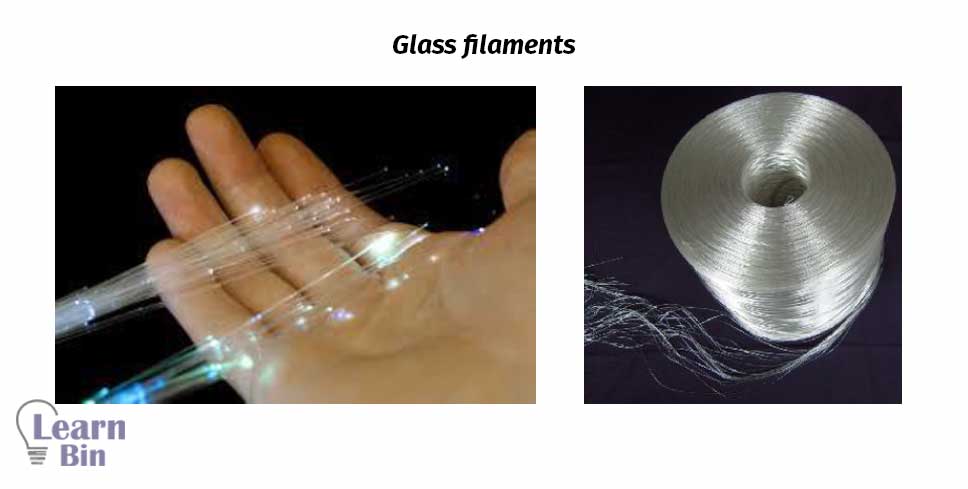
Fiberglass roving is a product manufactured by braiding glass strands into one large strand. Then that single strand is wound into a stable, cylindrical package. This is called a multi-end roving process. The process begins by placing several ovens dried forming packages into a creel. The glass strands are braided and roving into a rope-like structure.
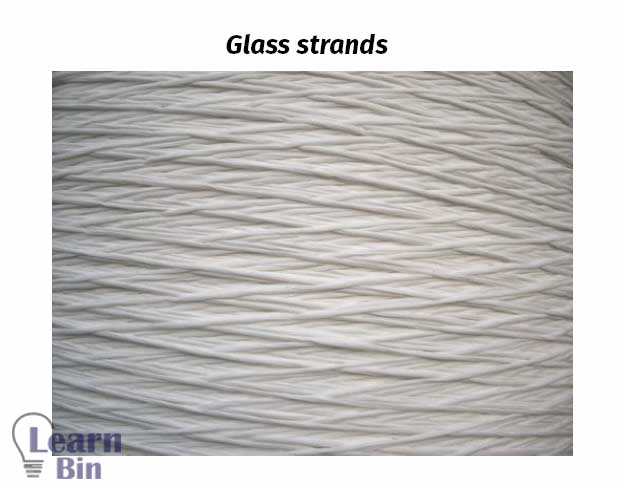
Veil mats and Woven Fabrics are types of glass fabrics.
Veil mats are thin films of continuous glass strands that are randomly looped across the material. A little amount of binder is added to bind the fiber strands together. Veil mats will keep the excess resin from draining into cells when a vacuum is not used. Veil mats are extremely thin, and the consistency is like tissue paper.
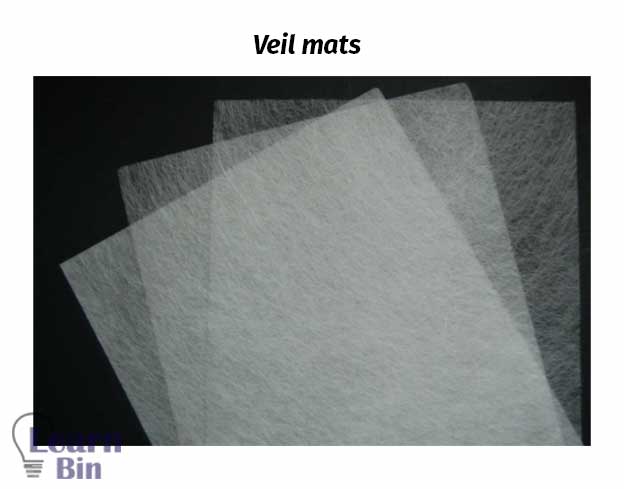
Fiberglass rovings or strands are woven into fabrics. Woven glass fabrics give high reinforcement to the final product.
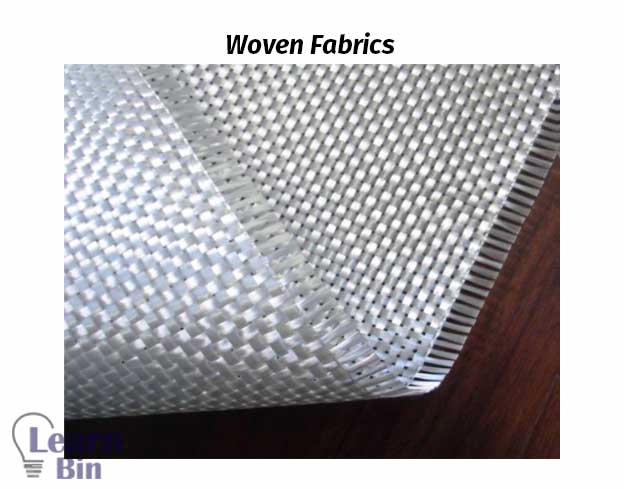
Glass strands are chopped into small glass fibers between 3 cm to 12 cm in length, by using a chopper. Chopped Strand Mats are made of randomly distributed chopped glass fibers with 5 cm in length. The chopped glass fibers are stitched together or bonded with a binder.
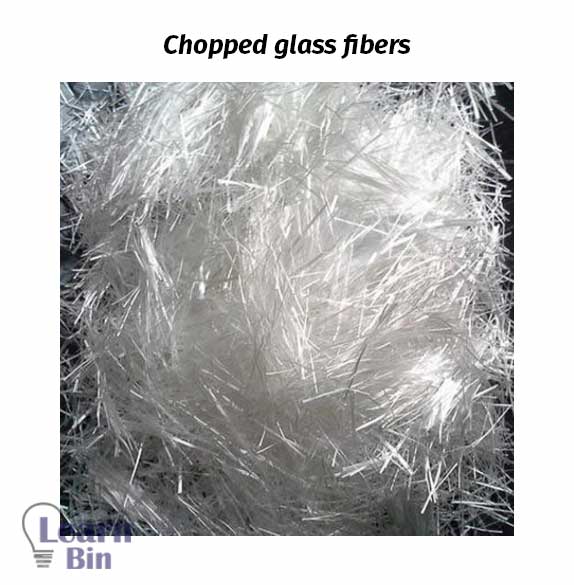
Glass-reinforced plastics can be processed by open mold process or intermediate process or heated mold process.
In the open mold process, plastic is processed at room temperature and atmospheric pressure.
Resin compound is poured into the mold cavity and the glass fibers are impregnated into the resin. The glass fibers can be woven, knitted, stitched, or bonded fabrics. Rollers and brushes are used to impregnate the glass fibers into the resin. Then it is left to cure at room temperature and atmospheric pressure. To prevent stickiness, a gel coat is applied to the mold.
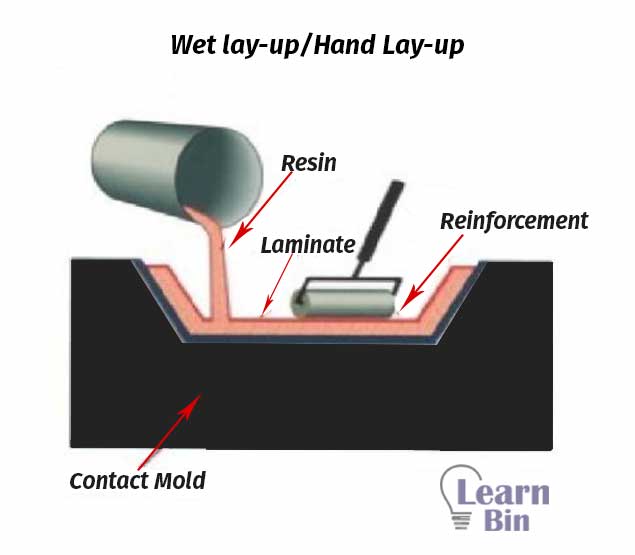
This process is majorly accomplished manually by workers. Therefore, this is a low-cost way of quickly depositing fiber and resin. But the main disadvantage of this method is the quality of the product depends on the skills of the worker. And there is a high possibility of incorporation of excessive quantities of voids. There is direct contact with resins and the workers. Most of the low molecular weight resins are harmful to health and will lead to health hazards.
Resin coating and glass fibers are applied to the mold as similar to the wet lay-up process. The mold is covered with a vacuum bag and the air under the vacuum bag is pumped out. Pressure improves the consolidation of resin and glass fibers. This process is safer than the wet lay-up process. Because due to the vacuum bag, there is a small possibility of volatile resins being released into the environment.
As well, higher fiber content can be laminated, and lower void content is achieved in vacuum bagging. The disadvantage of this process is increased cost. Typical applications of this process are large, one-off cruising boats and race car components.
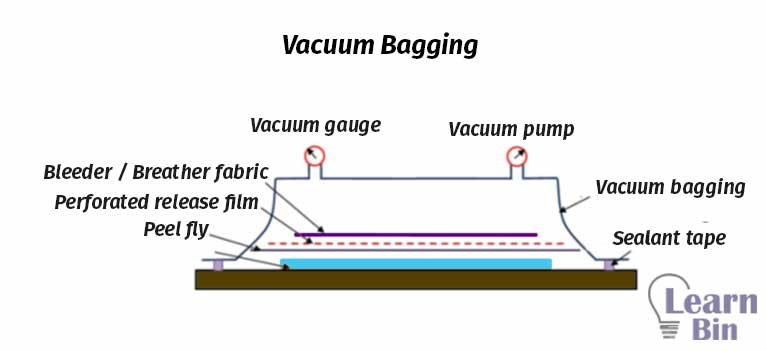
Chopped glass fibers and catalyzed resin is directly sprayed into the mold by a handheld gun. Then the deposit is let to be cured at atmospheric pressure and room temperature. Typical applications of the spray lay-up process are, simple enclosures, lightly loaded structural panels such as caravan bodies, truck rings, bathtubs, shower trays, etc.
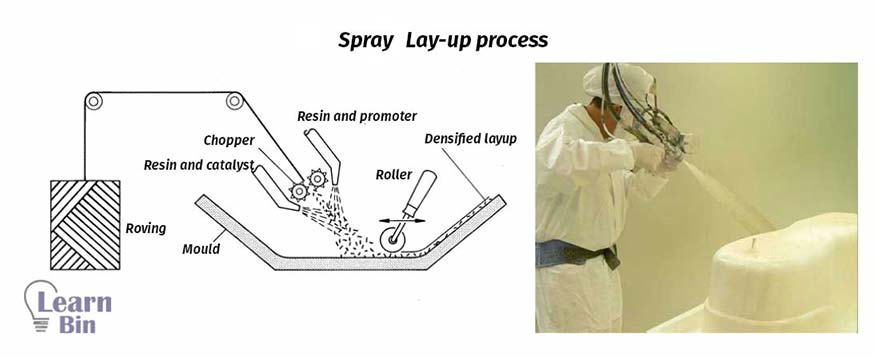
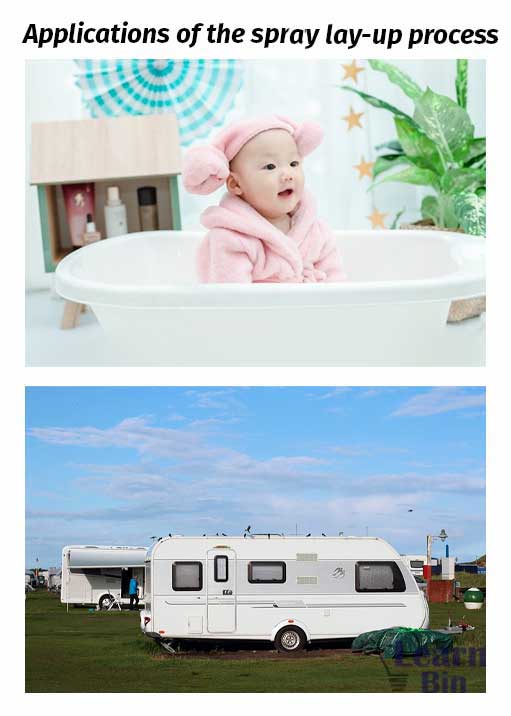
This process is used to manufacture hollow products such as pipes and tanks. First, the glass fibers are passed through a resin bath, and then it is winded up onto a mandrel. The rotating mandrel is winded up by glass fibers in a pre-determined pattern. This is a very economic method because fast and the fiber cost is reduced since there are no secondary processes to convert fibers into fabrics before use. Typical applications of winding products are chemical storage tanks, pipelines, gas cylinders, fire-fighters, breathing tanks, etc.

Processes that perform at elevated temperatures and under moderate pressure are intermediate processes. The temperature and pressure that use in the intermediate process are 150 ℃ and 20 – 50 MPa respectively.
The resin transfer molding process uses matched mold set to create a fixed cavity from where the product is made. Here, the glass reinforcing materials are used that are in form of mats, fabrics, textile preforms like knitted, braided, or 3-D stitched. The resin should have low viscosity and good flowability because the resin is injected into the mold. The resin and catalysts are mixed in the mixing chamber and injected into the mold which is already laid up of fiberglass mat.
Generally, high-volume products are made from the resin transfer molding process and the production rate is 2 – 8 parts per hour. The thickness of the product can be varied from 0.5mm to 90mm.
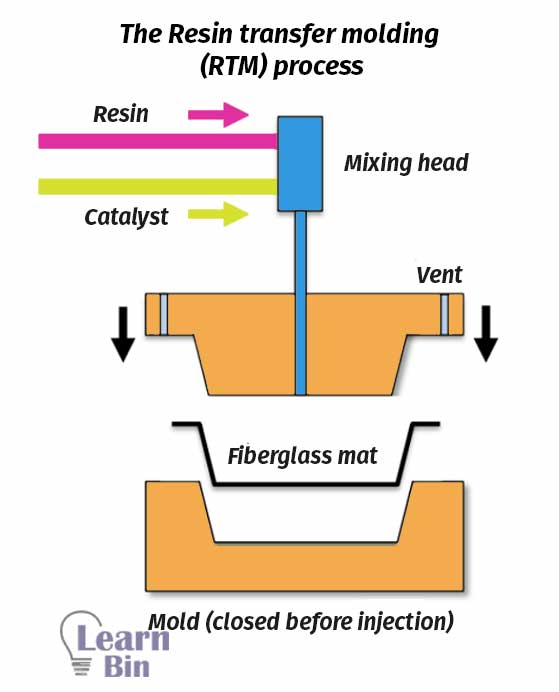
Products that are made by resin transfer molding have a good surface finish on both sides. This is a comparatively economic method because the tooling cost is low and only low pressure is used.
This method is safer because of low volatile emissions due to the closed mold process.
Disadvantages of this process are, waste is generated due to the spills of material, time-consuming process because it takes long curing time,
Applications of the resin transfer molding process are, hollow shapes and automotive body parts, big containers, bathtubs, etc.
In this process, a vacuum pump is used to pull the resin into glass fibers. First, glass fibers and the resin are loaded in the mold cavity. Resin is infused into the mold through a resin inlet and still infusing the resin, the mold is closed by a vacuum seal using a vacuum bag. When all the glass fabrics are wet out the resin inlet is closed. Then the curing process is taken place at the ambient or elevated temperature. The vacuum pump removes all the air in the mold cavity and improves the consolidation of glass fibers and resin.
The advantage of this process is it can laminate higher fiber content up to 70% of fiber by weight. Applications of the vacuum infusion process are Aircraft fuselage sections, Aircraft landing gear doors, Large composite panels, Wind turbine blades, etc
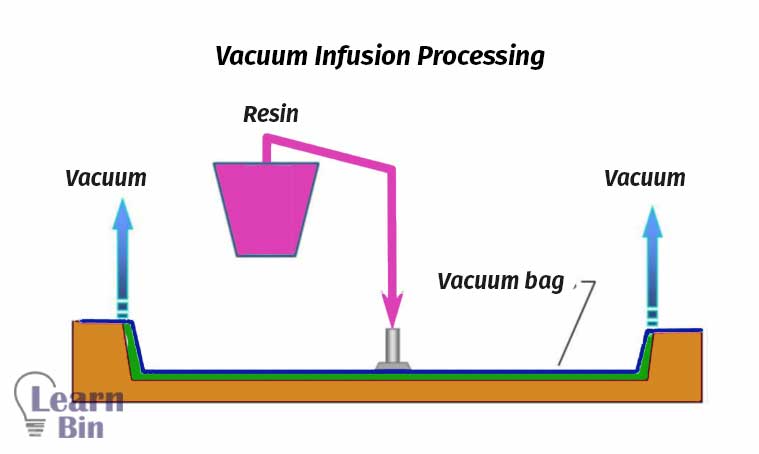
A vacuum bag was placed over the mold. Then the resin infusion and vacuum tubes were inserted into the bag. The air between the mold and the bag is removed using a vacuum. The resin was infused through infusion tubes. Due to the vacuum force, the resin is pulled towards the fiber reinforcement preform. Applications of vacuum-assisted transfer molding are Aircraft Fuselage Sections, Aircraft Landing Gear Doors, Large Composite Panels, and Wind Turbine Blades. This method is a very efficient method and high fiber content can be laminated.
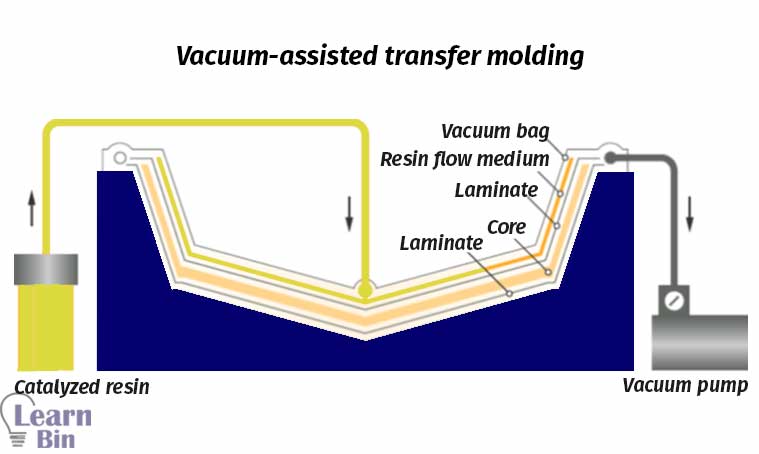
The heated mold process is the process that uses high heat and high pressure for laminating glass fibers.
In the pultrusion process, continuous long fibers are impregnated with activated resin. First glass fibers are passed through a resin bath. Then it was passed through a die that have the shape of the final product. Here the pressure and temperature are supplied, so the resin will cure. The cured profile will be cut into the desired length.
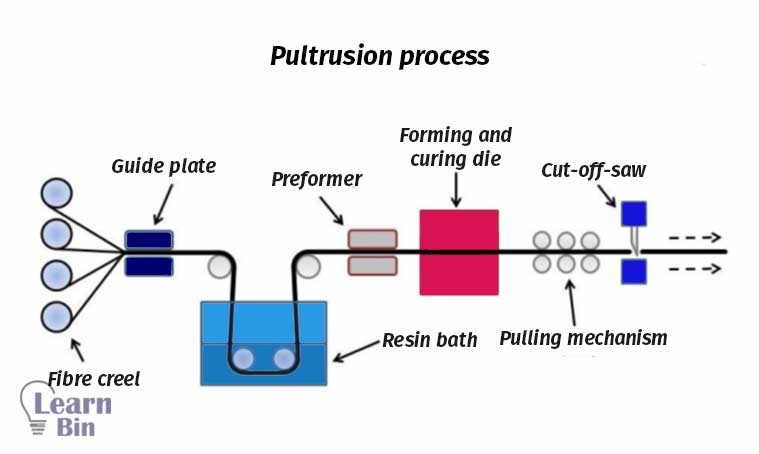
Compression molding is a process where bulk products are produced. Here, the mold has two parts and both parts are heated. Tyers-like products are manufactured using compression molding.
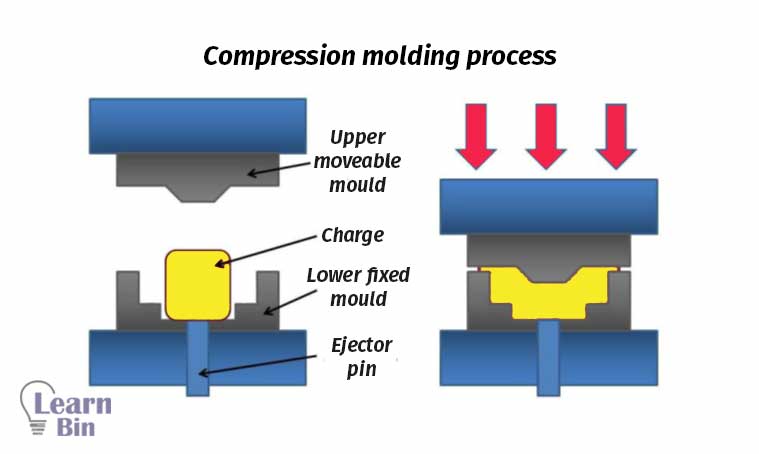

The cover image was created using Image by Rkit from Pixabay
Figure 09: Image by Hoang Hoi from Pixabay and Image by Maike und Björn Bröskamp from Pixabay